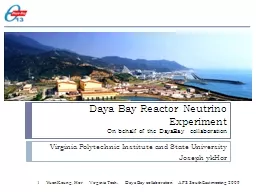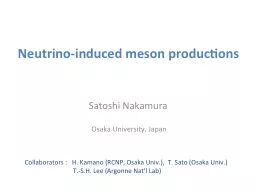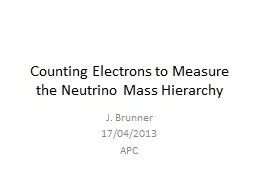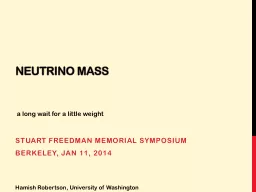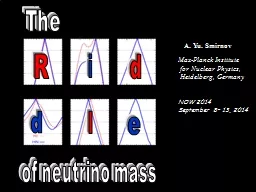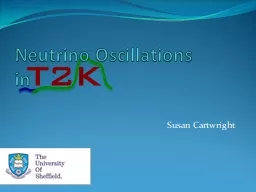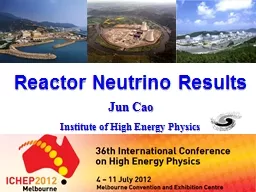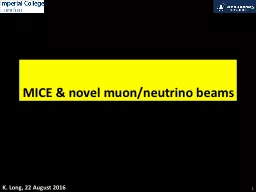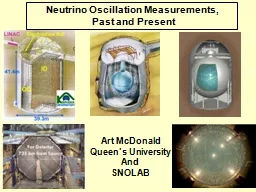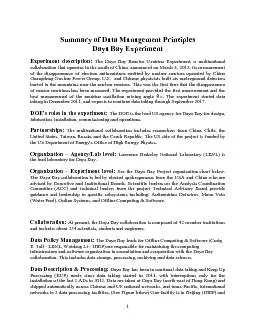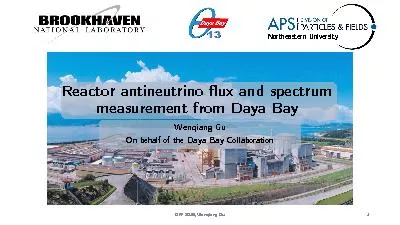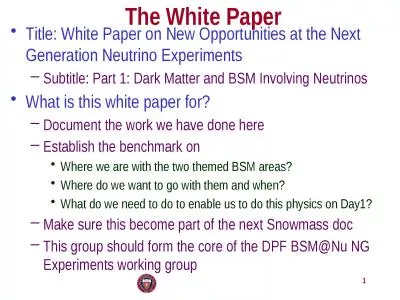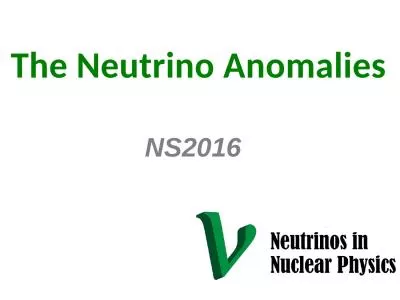PPT-Daya Bay Reactor Neutrino Experiment
Author : tatyana-admore | Published Date : 2018-02-03
On behalf of the DayaBay collaboration Virginia Polytechnic Institute and State University Joseph ykHor YuenKeung Hor Virginia Tech Daya Bay collaboration APS
Presentation Embed Code
Download Presentation
Download Presentation The PPT/PDF document "Daya Bay Reactor Neutrino Experiment" is the property of its rightful owner. Permission is granted to download and print the materials on this website for personal, non-commercial use only, and to display it on your personal computer provided you do not modify the materials and that you retain all copyright notices contained in the materials. By downloading content from our website, you accept the terms of this agreement.
Daya Bay Reactor Neutrino Experiment: Transcript
Download Rules Of Document
"Daya Bay Reactor Neutrino Experiment"The content belongs to its owner. You may download and print it for personal use, without modification, and keep all copyright notices. By downloading, you agree to these terms.
Related Documents

